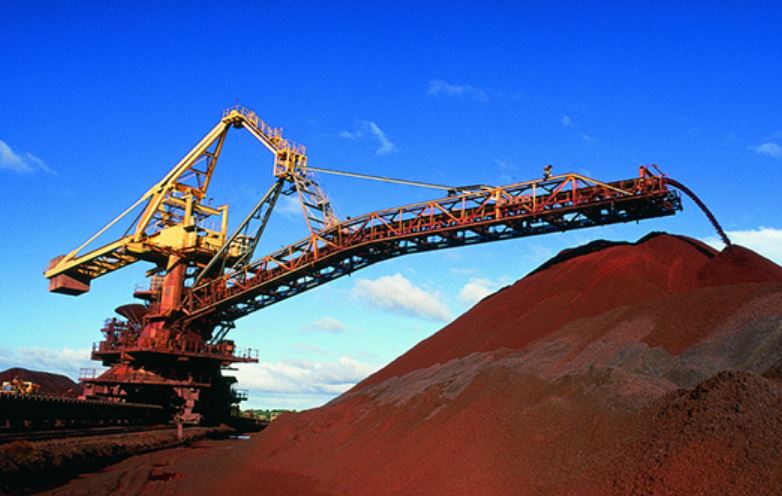Brazil’s Vale, Voestalpine, Thyssenkrupp and other steel and mining companies are navigating routes and new markets to decarbonize the steel sector, as renewable power generation and suitable iron ores remain key obstacles for slashing emissions.
Companies including ArcelorMittal, BHP, Rio Tinto and Bluescope are broadening a transformative approach to their steel-related business by exploring less costly approaches to replacement units, steel raw materials supply and energy consumption. Miners Rio Tinto and BHP are working with steel companies to optimize raw materials processes and grades, and Vale is offering new direct reduction iron (DRI), briquetting and biomass approaches to lower emissions and boost efficiencies.
SSAB’s approach to use new electric arc furnaces (EAF) and green hydrogen DRI may be complemented by new direct iron reduction and melting units, and recycling steel feedstocks and carbon in chemicals and aggregates sales, steel executives said at an Association for Iron and Steel Technology European steel event Oct. 27-29.
While technological advancements and new steel configurations are planned, low-emissions steel markets and premiums need to emerge to support the transition, Frank Ahrenhold, head of sustainable steel production at Thyssenkrupp Steel, said at the AIST forum.
“We also have to create a first market, because steel needs to stay a business model, it needs to be successful to produce carbon neutral, the price for that needs to be paid by the customers in the end,” Ahrenhold said. “This is probably even the bigger picture, to build this first market because it concludes it is fossil-free, and on top of that it needs to be a business model. I think it all looks very promising at the moment, society is pushing that into the right direction, and I think especially in Europe politics is helping.”
TKS plans to use an electric melting unit with a hydrogen-based DRI process and use existing steel rolling infrastructure. TKS will test different steel raw materials quality for optimal use and impact on slag and downstream products, including for the cement industry, he said. TKS is about to build a pilot DRI and smelting facilties for testing, to be operated on a quasi-continuous way, Ahrenhold said.
EAFs not optimal for lower-grade iron
Iron ore fines and concentrates use in new low-emission processes need to be optimized to provide a wider range of solutions rather than focusing on DRI shaft furnaces operating on DR pellets, Thomas Buergler, head of R&D ironmaking at Voestalpine Stahl, said at the AIST event.
There isn’t enough scrap metal to meet steel output, and iron ore-based steel production will remain necessary, Buergler said.
There are limited high-grade iron ores suitable for direct reduction in the shaft furnace, and melting units need to be explored as an alternative to the classic DRI-EAF approach, he said.
“We need also new technologies between the direct reduction process and the steelmaking unit, and after 2030 we have to find ways how to treat this low and medium grade iron ores in the direct reduction process and also steel making process,” Buergler said. “The classic EAF is not the efficient reactor for melting HBI-DRI with high gangue volumes.”
Brazil’s Vale has new approaches which may minimize requirements for renewable electricity and high-grade iron ore pellets for lower-emissions steelmaking, Vale metallics director Steve Potter said.
Vale’s biocarbon melter technology, can limit slag volume, and allow lower quality iron ore to be used in the basic oxygen furnace, his presentation to the AIST showed.
“Only 3% of the world’s seaborne iron ore has a grade of greater than 66%-Fe, which is a grade that can be appropriate for the electric arc furnace,” Potter said.
It will cost $1 trillion-$2 trillion to replace blast furnaces globally, while there are uncertainties on maturity of alternative steel technologies, market and other policies and carbon prices, he said.
ArcelorMittal seeks to use higher scrap
ArcelorMittal in Europe expects to boost scrap use further from an existing 20%-25% ratio, and will look at carbon recycling and capture and storage, and new ironmaking technology with hydrogen-based DRI, Kristian Notebaert, CTO, decarbonization at ArcelorMittal Flat Europe said.
“It is always the sum of several pathways, we find electrification, the electric arc furnace is a typical example, we find gas-based reduction with the end goal to use hydrogen as reduction gas, also the circular economy is an important element in our decarbonization” Notebaert said at the AIST event. “Green electricity is a vast contributing factor, and also our CCU [carbon capture and utilization] in the right-sizing completes the picture.”
Use of biomass and carbon capture and storage could lead to negative emissions contributions to the overall steel business performance, helping offset carbon use and emissions elsewhere, Tim Peeters, iron and steel R&D manager at Tata Steel told the AIST event.
Customers are looking for climate-neutral products, but also circular products, Peeters said.
SSAB is starting deliveries of low-emissions heavy plate and strip products from the Borlange, Sweden, site to several auto and construction sector buyers, which showed interest in pilot products, SSAB’s executive vice president and CTO Martin Pei told the AIST event. Volvo Cars, Mercedes-Benz are among users signing up for tests.
SSAB is using HBI from the pilot green hydrogen-based HYBRIT plant in Lulea, and making steel in Oxelosund. The HYBRIT joint venture partners include iron ore supplier LKAB, and utility Vattenfall.
SSAB is working on a plan for the new HYBRIT demonstration DRI plant at Gallivare of 1.35 million mt/year capacity to feed a new EAF plant at the company’s Oxelosund works by 2026 where site works have started.
SSAB plans to install EAFs in Lulea, Sweden, and Raahe, Finland, between 2030-2040, switching off all its blast furnaces before Sweden’s goal of transitioning to a fossil-fuel free economy in 2045. HYBRIT’s industrial-scale plants will feed the other EAFs.
— Hector Forster






